#American King James Version
Text

Hosea Redeems his Wife
(Zechariah 2:6-13)
1 Then said the LORD to me, Go yet, love a woman beloved of her friend, yet an adulteress, according to the love of the LORD toward the children of Israel, who look to other gods, and love flagons of wine. 2 So I bought her to me for fifteen pieces of silver, and for an homer of barley, and an half homer of barley: 3 And I said to her, You shall abide for me many days; you shall not play the harlot, and you shall not be for another man: so will I also be for you. 4 For the children of Israel shall abide many days without a king, and without a prince, and without a sacrifice, and without an image, and without an ephod, and without teraphim: 5 Afterward shall the children of Israel return, and seek the LORD their God, and David their king; and shall fear the LORD and his goodness in the latter days.
— Hosea 3 | American King James Version (KJVUS)
The American King James Version is Produced by Stone Engelbrite. It is a simple word for modern word update from the King James English.
Cross References: Genesis 31:19; Genesis 31:34; Exodus 34:15; Deuteronomy 4:30; Deuteronomy 21:13; Ruth 4:10; 2 Samuel 6:19; 1 Chronicles 16:3; Isaiah 2:2-3
#Hosea#Hosea's wife#reconciliation#redemption#Hosea 3#Book of Hosea#Old Testament#KJVUS#American King James Version#Holy Bible#Stone Engelbrite
20 notes
·
View notes
Text
Can you see hoodoo in the black church? Many spiritualists emerged out of the black church because of the charisma and liturgy. Black Americans have flocked to the house of God for sanctuary and celebration over the years. Churches provided space for freedom fighters to organize and allowed runaways to find refuge. Look past the homophobic rhetoric and big hats, the church has been a hiding place for Blacks in America! Should we throw the church away or bring REFORM? Comment Below✨

#black americans#rootwork#hoodoo#african american#spiritualism#church#god#king james version#america
13 notes
·
View notes
Text
Here's THE masterpost of free and full adaptations, by which I mean that it's a post made by the master.
Anthony and Cleopatra: here's the BBC version, here's a 2017 version.
As you like it: you'll find here an outdoor stage adaptation and here the BBC version. Here's Kenneth Brannagh's 2006 one.
Coriolanus: Here's a college play, here's the 1984 telefilm, here's the 2014 one with tom hiddleston. Here's the Ralph Fiennes 2011 one.
Cymbelline: Here's the 2014 one.
Hamlet: the 1948 Laurence Olivier one is here. The 1964 russian version is here and the 1964 american version is here. The 1964 Broadway production is here, the 1969 Williamson-Parfitt-Hopkins one is there, and the 1980 version is here. Here are part 1 and 2 of the 1990 BBC adaptation, the Kenneth Branagh 1996 Hamlet is here, the 2000 Ethan Hawke one is here. 2009 Tennant's here. And have the 2018 Almeida version here. On a sidenote, here's A Midwinter's Tale, about a man trying to make Hamlet. Andrew Scott's Hamlet is here.
Henry IV: part 1 and part 2 of the BBC 1989 version. And here's part 1 of a corwall school version.
Henry V: Laurence Olivier (who would have guessed) 1944 version. The 1989 Branagh version here. The BBC version is here.
Julius Caesar: here's the 1979 BBC adaptation, here the 1970 John Gielgud one. A theater Live from the late 2010's here.
King Lear: Laurence Olivier once again plays in here. And Gregory Kozintsev, who was I think in charge of the russian hamlet, has a king lear here. The 1975 BBC version is here. The Royal Shakespeare Compagny's 2008 version is here. The 1974 version with James Earl Jones is here. The 1953 Orson Wells one is here.
Macbeth: Here's the 1948 one, there the 1955 Joe McBeth. Here's the 1961 one with Sean Connery, and the 1966 BBC version is here. The 1969 radio one with Ian McKellen and Judi Dench is here, here's the 1971 by Roman Polanski, with spanish subtitles. The 1988 BBC one with portugese subtitles, and here the 2001 one). Here's Scotland, PA, the 2001 modern retelling. Rave Macbeth for anyone interested is here. And 2017 brings you this.
Measure for Measure: BBC version here. Hugo Weaving here.
The Merchant of Venice: here's a stage version, here's the 1980 movie, here the 1973 Lawrence Olivier movie, here's the 2004 movie with Al Pacino. The 2001 movie is here.
The Merry Wives of Windsor: the Royal Shakespeare Compagny gives you this movie.
A Midsummer Night's Dream: have this sponsored by the City of Columbia, and here the BBC version. Have the 1986 Duncan-Jennings version here. 2019 Live Theater version? Have it here!
Much Ado About Nothing: Here is the kenneth branagh version and here the Tennant and Tate 2011 version. Here's the 1984 version.
Othello: A Massachussets Performance here, the 2001 movie her is the Orson Wells movie with portuguese subtitles theree, and a fifteen minutes long lego adaptation here. THen if you want more good ole reliable you've got the BBC version here and there.
Richard II: here is the BBC version. If you want a more meta approach, here's the commentary for the Tennant version. 1997 one here.
Richard III: here's the 1955 one with Laurence Olivier. The 1995 one with Ian McKellen is no longer available at the previous link but I found it HERE.
Romeo and Juliet: here's the 1988 BBC version. Here's a stage production. 1954 brings you this. The french musical with english subtitles is here!
The Taming of the Shrew: the 1980 BBC version here and the 1988 one is here, sorry for the prior confusion. The 1929 version here, some Ontario stuff here, and here is the 1967 one with Richard Burton and Elizabeth Taylor. This one is the Shakespeare Retold modern retelling.
The Tempest: the 1979 one is here, the 2010 is here. Here is the 1988 one. Theater Live did a show of it in the late 2010's too.
Timon of Athens: here is the 1981 movie with Jonathan Pryce,
Troilus and Cressida can be found here
Titus Andronicus: the 1999 movie with Anthony Hopkins here
Twelfth night: here for the BBC, here for the 1970 version with Alec Guinness, Joan Plowright and Ralph Richardson.
Two Gentlemen of Verona: have the 2018 one here. The BBC version is here.
The Winter's Tale: the BBC version is here
Please do contribute if you find more. This is far from exhaustive.
(also look up the original post from time to time for more plays)
#adaptations#macbeth#hamlet#king lear#twelfth night#much ado about nothing#henry iv#henry v#richard iii#julius caesar#timon of athens#troilus and cressida
59K notes
·
View notes
Text
How plausible sentence generators are changing the bullshit wars
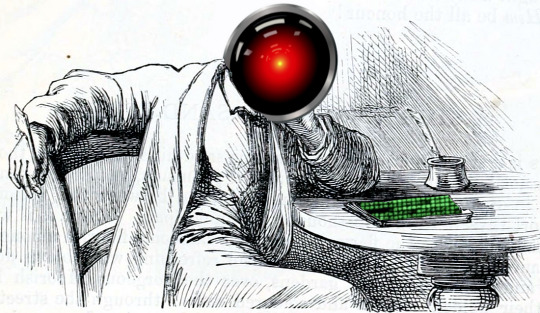
This Friday (September 8) at 10hPT/17hUK, I'm livestreaming "How To Dismantle the Internet" with Intelligence Squared.
On September 12 at 7pm, I'll be at Toronto's Another Story Bookshop with my new book The Internet Con: How to Seize the Means of Computation.

In my latest Locus Magazine column, "Plausible Sentence Generators," I describe how I unwittingly came to use – and even be impressed by – an AI chatbot – and what this means for a specialized, highly salient form of writing, namely, "bullshit":
https://locusmag.com/2023/09/commentary-by-cory-doctorow-plausible-sentence-generators/
Here's what happened: I got stranded at JFK due to heavy weather and an air-traffic control tower fire that locked down every westbound flight on the east coast. The American Airlines agent told me to try going standby the next morning, and advised that if I booked a hotel and saved my taxi receipts, I would get reimbursed when I got home to LA.
But when I got home, the airline's reps told me they would absolutely not reimburse me, that this was their policy, and they didn't care that their representative had promised they'd make me whole. This was so frustrating that I decided to take the airline to small claims court: I'm no lawyer, but I know that a contract takes place when an offer is made and accepted, and so I had a contract, and AA was violating it, and stiffing me for over $400.
The problem was that I didn't know anything about filing a small claim. I've been ripped off by lots of large American businesses, but none had pissed me off enough to sue – until American broke its contract with me.
So I googled it. I found a website that gave step-by-step instructions, starting with sending a "final demand" letter to the airline's business office. They offered to help me write the letter, and so I clicked and I typed and I wrote a pretty stern legal letter.
Now, I'm not a lawyer, but I have worked for a campaigning law-firm for over 20 years, and I've spent the same amount of time writing about the sins of the rich and powerful. I've seen a lot of threats, both those received by our clients and sent to me.
I've been threatened by everyone from Gwyneth Paltrow to Ralph Lauren to the Sacklers. I've been threatened by lawyers representing the billionaire who owned NSOG roup, the notoroious cyber arms-dealer. I even got a series of vicious, baseless threats from lawyers representing LAX's private terminal.
So I know a thing or two about writing a legal threat! I gave it a good effort and then submitted the form, and got a message asking me to wait for a minute or two. A couple minutes later, the form returned a new version of my letter, expanded and augmented. Now, my letter was a little scary – but this version was bowel-looseningly terrifying.
I had unwittingly used a chatbot. The website had fed my letter to a Large Language Model, likely ChatGPT, with a prompt like, "Make this into an aggressive, bullying legal threat." The chatbot obliged.
I don't think much of LLMs. After you get past the initial party trick of getting something like, "instructions for removing a grilled-cheese sandwich from a VCR in the style of the King James Bible," the novelty wears thin:
https://www.emergentmind.com/posts/write-a-biblical-verse-in-the-style-of-the-king-james
Yes, science fiction magazines are inundated with LLM-written short stories, but the problem there isn't merely the overwhelming quantity of machine-generated stories – it's also that they suck. They're bad stories:
https://www.npr.org/2023/02/24/1159286436/ai-chatbot-chatgpt-magazine-clarkesworld-artificial-intelligence
LLMs generate naturalistic prose. This is an impressive technical feat, and the details are genuinely fascinating. This series by Ben Levinstein is a must-read peek under the hood:
https://benlevinstein.substack.com/p/how-to-think-about-large-language
But "naturalistic prose" isn't necessarily good prose. A lot of naturalistic language is awful. In particular, legal documents are fucking terrible. Lawyers affect a stilted, stylized language that is both officious and obfuscated.
The LLM I accidentally used to rewrite my legal threat transmuted my own prose into something that reads like it was written by a $600/hour paralegal working for a $1500/hour partner at a white-show law-firm. As such, it sends a signal: "The person who commissioned this letter is so angry at you that they are willing to spend $600 to get you to cough up the $400 you owe them. Moreover, they are so well-resourced that they can afford to pursue this claim beyond any rational economic basis."
Let's be clear here: these kinds of lawyer letters aren't good writing; they're a highly specific form of bad writing. The point of this letter isn't to parse the text, it's to send a signal. If the letter was well-written, it wouldn't send the right signal. For the letter to work, it has to read like it was written by someone whose prose-sense was irreparably damaged by a legal education.
Here's the thing: the fact that an LLM can manufacture this once-expensive signal for free means that the signal's meaning will shortly change, forever. Once companies realize that this kind of letter can be generated on demand, it will cease to mean, "You are dealing with a furious, vindictive rich person." It will come to mean, "You are dealing with someone who knows how to type 'generate legal threat' into a search box."
Legal threat letters are in a class of language formally called "bullshit":
https://press.princeton.edu/books/hardcover/9780691122946/on-bullshit
LLMs may not be good at generating science fiction short stories, but they're excellent at generating bullshit. For example, a university prof friend of mine admits that they and all their colleagues are now writing grad student recommendation letters by feeding a few bullet points to an LLM, which inflates them with bullshit, adding puffery to swell those bullet points into lengthy paragraphs.
Naturally, the next stage is that profs on the receiving end of these recommendation letters will ask another LLM to summarize them by reducing them to a few bullet points. This is next-level bullshit: a few easily-grasped points are turned into a florid sheet of nonsense, which is then reconverted into a few bullet-points again, though these may only be tangentially related to the original.
What comes next? The reference letter becomes a useless signal. It goes from being a thing that a prof has to really believe in you to produce, whose mere existence is thus significant, to a thing that can be produced with the click of a button, and then it signifies nothing.
We've been through this before. It used to be that sending a letter to your legislative representative meant a lot. Then, automated internet forms produced by activists like me made it far easier to send those letters and lawmakers stopped taking them so seriously. So we created automatic dialers to let you phone your lawmakers, this being another once-powerful signal. Lowering the cost of making the phone call inevitably made the phone call mean less.
Today, we are in a war over signals. The actors and writers who've trudged through the heat-dome up and down the sidewalks in front of the studios in my neighborhood are sending a very powerful signal. The fact that they're fighting to prevent their industry from being enshittified by plausible sentence generators that can produce bullshit on demand makes their fight especially important.
Chatbots are the nuclear weapons of the bullshit wars. Want to generate 2,000 words of nonsense about "the first time I ate an egg," to run overtop of an omelet recipe you're hoping to make the number one Google result? ChatGPT has you covered. Want to generate fake complaints or fake positive reviews? The Stochastic Parrot will produce 'em all day long.
As I wrote for Locus: "None of this prose is good, none of it is really socially useful, but there’s demand for it. Ironically, the more bullshit there is, the more bullshit filters there are, and this requires still more bullshit to overcome it."
Meanwhile, AA still hasn't answered my letter, and to be honest, I'm so sick of bullshit I can't be bothered to sue them anymore. I suppose that's what they were counting on.



If you'd like an essay-formatted version of this post to read or share, here's a link to it on pluralistic.net, my surveillance-free, ad-free, tracker-free blog:
https://pluralistic.net/2023/09/07/govern-yourself-accordingly/#robolawyers

Image:
Cryteria (modified)
https://commons.wikimedia.org/wiki/File:HAL9000.svg
CC BY 3.0
https://creativecommons.org/licenses/by/3.0/deed.en
#pluralistic#chatbots#plausible sentence generators#robot lawyers#robolawyers#ai#ml#machine learning#artificial intelligence#stochastic parrots#bullshit#bullshit generators#the bullshit wars#llms#large language models#writing#Ben Levinstein
2K notes
·
View notes
Note
Trick or trivia
Happy Halloween! I do enjoy trivia of many types, but one of my favorite genres is what I call the Berenstein Timeline: unmade shows and movies, versions of classic movies where studios and producers made different decisions, some better, some much worse. All of these are real projects that were, on some level, considered (there are some recurring names)
"Heat Vision & Jack", a 90s pastiche of 70s-80s action shows starring Jack Black as an astronaut on the run from the law and Owen Wilson as his talking motorcycle
"Jurassic Park" directed by Tim Burton with Johnny Depp as Alan Grant, Jim Carrey as Ian Malcolm, and Vincent Price as John Hammond
the 90s "Batman" directed by Ivan Reitman; Bill Murray and Eddie Murphy were going to star but couldn't decide which of them would be Batman and which would be Robin
Back in the 1970s the American network was getting good numbers showing heavily-edited reruns of "Monty Python's Flying Circus", so they tried to sell the Pythons on the next logical step: an animated Saturday morning cartoon
"Edward Scissorhands" still directed by Burton but starring Tom Cruise or maybe Michael Jackson
"Return of the Jedi" directed by David Lynch; Harrison Ford was considering not coming back for the third movie and so when he came out of the carbonite there was a chance he would have been Christopher Walken
Guillermo del Toro's "At the Mountains of Madness". Also "the Hobbit" and lots of other things, he seems to have a lot of unmade projects
the 2010s "Star Trek" movie directed by Quentin Tarantino, where the edgy reboot crew visits the Gangster Planet from that one stupid episode of the original series
Everybody knows about the unmade "Superman Lives" starring Nicolas Cage in the title role, but did you know it was going to be directed by Tim Burton and include Christopher Walken as Brainiac, who would have been a green head on spider legs
Harold Ramis didn't particularly want to act on camera, so when they were casting "Ghostbusters" Egon could have been Christopher Walken, Christopher Lloyd, Jeff Goldblum, or John Lithgow. Supposedly the movie was originally intended to be a relatively serious exploration of Dan Akroyd's very real interest in paranormal investigation, although this clashes a bit with the fact that Peter Venkman was originally going to be played by John Belushi and Winston Zeddmore was written for Eddie Murphy who backed out when the character's backstory and most of his lines were cut
John Waters' animated series "Uncle John" on 90s MTV
the original version of "Bill & Ted's Time Van" starring Pauly Shore and Sean Penn
"Red Dragon" (the original Hannibal Lecter novel) directed by David Lynch starring John Lithgow as Hannibal Lecter and Mel Gibson as Will Graham
the 1970s "Dr. Strange" TV series
the 1990s Disney animated "John Carter of Mars"
the 1990s Warner Bros animated "King Tut" musical with songs by Prince
the serious horror version of "Beetlejuice"
Drew Barrymore's 2000s remake of "Barbarella"
the Dungeons & Dragons movie James Cameron was going to make until TSR left the table over merchandising disputes, forcing Cameron to go work on some dumb movie about the Titanic
American "Doctor Who" movie starring Michael Jackson
Canadian "Doctor Who" cartoon by Nelvana starring a Doctor based intensely off of either Jeff Goldblum or Christopher Lloyd
"Harry Potter and the Philosopher's Stone" directed by Terry Gilliam
"Good Omens" directed by Terry Gilliam and starring Johnny Depp and Robin Williams
"The Black Cauldron" using character and background designs by Nightmare-era Tim Burton
110 notes
·
View notes
Note
Could you maybe do headcanons for a female, American reader dating James mcavoy? 💖
james mcavoy x reader headcanons

⋆ ˚。⋆୨୧˚ masterlist ⋆ ˚。⋆୨୧˚
a/n: hope you enjoy these little headcanons love!!
~~~~~~~~~~~~~~~~~~~~°~❦~°~~~~~~~~~~~~~~~~~~~~
dating james would include…
he first met you at an event for one of his movies
you saw each other from across the room and after a wink and a head tilt saying ‘you wanna get out of here?’ the rest is history
like alexa play enchanted (taylor’s version) by taylor swift
you drink so much tea together
and he makes fun of you for that ‘weak watery, american stuff’
whispering cheeky little things in your ear 🤭
so many inside jokes
rubs your back
he takes you to all of his premiers and throughout all of his interviews he just can’t wait to be done and spend the evening with you
everything you do makes him laugh and he’s just so amused by you
breakfast in bed
his hand on your thigh under the table at a dinner party
giving you his coat to where over your dress
he took you back to Scotland once to show you all of his favorite places
you and michael are good friends obviously
your name in his phone is ‘my love’
neck kisses
you guys play just dance and you win every time
he talks big game but he’s definitely the little spoon
except for when he’s on top because ‘if anybody’s giving…’
if you got that reference ily
aftercare KING
he’s so gentle with you it’s adorable
y’know the ‘she fell first but he fell harder’ trope?
that’s you guys
always holding your hand and playing with your rings if you’re wearing any
he just loves you so much and you guys are so happy together <3
~~~~~~~~~~~~~~~~~~~~°~❦~°~~~~~~~~~~~~~~~~~~~~
ˋ°•*⁀➷ hope you enjoyed this babes!! have a wonderful day <3🎀🪩
#james mcavoy#james mcavoy x reader#fanfiction#fanfic#reader insert#headcanon#x reader#michael fassbender
200 notes
·
View notes
Text
IWTV Season 2 Sources & References
(The 1st 4 were cited by the Writer’s Room)
The Ethnic Avante-Garde: Minority Cultures and World Revolution by Steven S. Lee
Paris Journal 1944-1955 by Janet Flanner (Genet)
The Vampire: A Casebook by Alan Dundes
Anne Rice’s Vampire Chronicles: An Alphabettery
The Fly cited by Jacob Anderson
King Lear by Shakespeare cited by Rolin Jones
Melmoth the Wanderer by Charles Maturin
Sebastien Melmoth by Oscar Wilde
Amadeus (1984)
The Lost Boys (1987)
Gaslight (1944)
Batman
Casablanca (1942)
Now, Voyager (1942)
The Third Man (1949) cited by Levan Akin
An American in Paris by George Gershwin (1928) cited by Daniel Hart
Moulin Rouge (2001)
The Phantom of the Opera
Les Vampires (1915)
Dracula (1931) credit to @vampchronicles_ on twt
Le Triomphe de L’amour by Pierre de Marivaux
Giovanni’s Room by James Baldwin cited by Jacob Anderson
Existentialism is a Humanism by Jean Paul Sartre
Les Liaisons Dangereuses by Pierre Choderlos de Laclos
Romeo and Juliet by William Shakespeare
How to Win Friends and Influence People by Dale Carnegie
Hamlet by William Shakespeare
Vampire’s Kiss (1988) credit to @talesfromthecrypts
Les Morts ont tous le Meme Peau by Boris Vian credit to @greedandenby
The Most Dangerous Game by Richard Connell
Waiting for Godot by Samuel Barclay Beckett credit to @rorscachisgay on twt
An Enemy of the People by Ibsen
Anna Karenina by Leo Tolstoy
Vie de Voltaire by Marquis Condorcet
Simone de Beauvoir: A Critical Introduction by Edward Fullbrook and Kate Fullbrook credit to @iwtvfanevents
Nightwood by Djuna Barnes credit to @iwtvfanevents
Beloved by Toni Morrison
Artists and Salons Referenced:
R-26
Palma Vecchio
Andre Fougeron
Elsa Triollet
Fred Stein
Lisette Model
Gordon Parks
Miguel Barcelo
Taxidermied Javelina by Chris Roberts-Antieau
Ai WeiWei (wallpaper)
David Hockney (Lemons)
Wols
The Kiss of Judas by Jakob Smits
Salome by Louis Icart
Ophelia by John Everett Millais
Shelter by Peter Macon
The Kiss by Edvard Munch
The Vampire or Love and Pain by Edvard Munch credit @iwtvasart
Ruiter on Horse by Reiger Stolk credit @ iwtvasart
Portrait of Frank Burty Haviland by Modigliani credit @iwtvasart
Self-Seers II (Death and Man) by Egon Schiele credit to @90sgreggaraki
The Sleep of Reason Produces Monsters by Goya
Movie & Play Posters on set (in chronological order by year):
Tarzan and his Mate (1934)
Avec le Sourire (1936)
Les Deux Gosses (1936)
Le Jour Se Leve (1939) about a man who commits murder as a result of a love triangle and locks himself in his apartment recounting the details as the police attempt to arrest him. Credit to @laisofhyccara
Nuit de Décembre (1940)
Mademoiselle Swing (1942) about a girl who follows a troupe of swing musicians to Paris.
Les Enfents du Paradis (1945) about a woman with many suitors including an actor and an aristocrat.
Fantomas (1946) about a sadistic criminal mastermind. This version includes a hideout in the catacombs where he traps people.
Quai des Orfevres (1947) watch here
Monsieur Vincent (1947)
Le Cafe du Cadran (1947) about a wife’s affair with a violinist.
La Kermesse Rouge (1947) film about a jealous artist who locks up his younger wife and a fire breaks out while she’s trapped.
Morts Sans Sepulture by Jean-Paul Sartre (play) also published in English translations as “The Victors” or “Men Without Shadows” about resistance fighters captured by Vichy soldiers struggling not to give up information.
Mon Faust by Paul Valery (play)
Musical Influences:: @greedandenby collected all music used in Season 2 here.
Henry Cowell
Meredith Monk
Howling’ Wolf
Shirley Temple
Jason Lindner Big Band
The Teeth
Carlos Salzedo
Alice Coltrane
Thelonius Monk
David Lang
Caroline Shaw
Gadfly by Shostakovich (for Raglan James)
musical career of Martha Argerich
Season 1 here (these lists are updated regularly)
Season 3 here
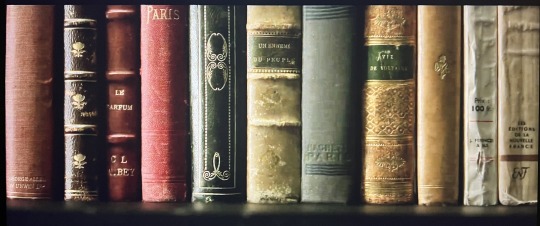
#iwtv#season 2#given that the posters are starting to come out of Prague I decided to start compiling sources and references in one place#Set design#production design#iwtv art
257 notes
·
View notes
Note
Hi, I am considering converting to catholism and I figured i should get a catholic version of the bible, but I have had a difficult time figuring out which version to get, can you recommend one?
Hi! I mostly read and like the New American Bible: Revised Edition (NABRE) but if you like the King James version then you might like the Douay-Rheims Bible because the wording is similar, whereas NABRE and other versions have more modern words
20 notes
·
View notes
Text
There's still a haunt on the hill...
In my previous post, I dug through the ghostly chain of adaptations of Shirley Jackson's "The Haunting of Hill House" starting by its various movie incarnations. But I am not done...

Because in 2018, Mike Flanagan released on Netflix his massively successful television series, "The Haunting of Hill House".
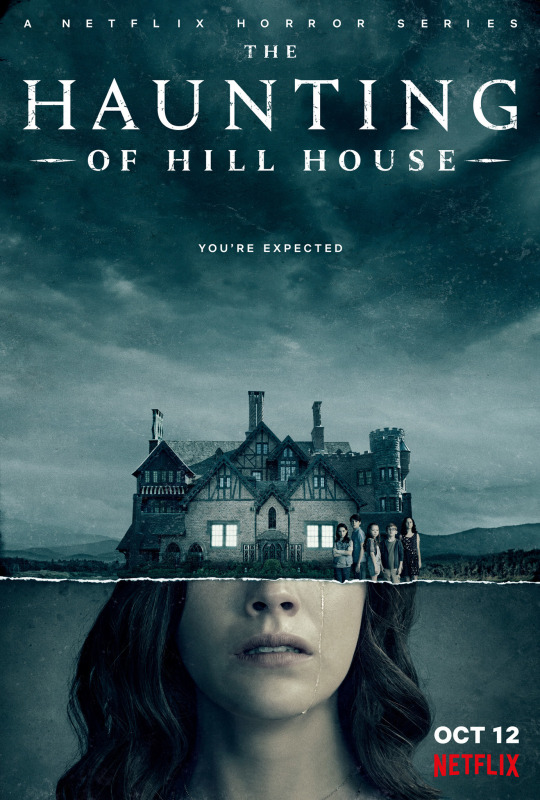
Flanagan's television series was strongly influenced by "The Shining", another major haunting-story of the 20th century, first marking American literature under the pen of Stephen King...

... Then marking American cinema by the movie adaptation of Stanley Kubrick.

Mike Flanagan never hid his passion and love for "The Shining", both the Kubrick and King versions, and it is for this reason he was the man behind the 2019 movie "Doctor Sleep"....
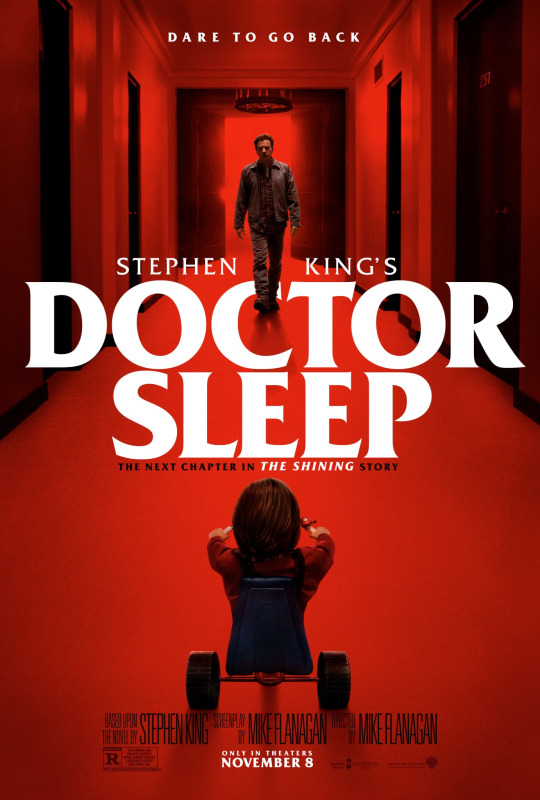
... an adaptation of Stephen King's sequel-novel to The Shining.
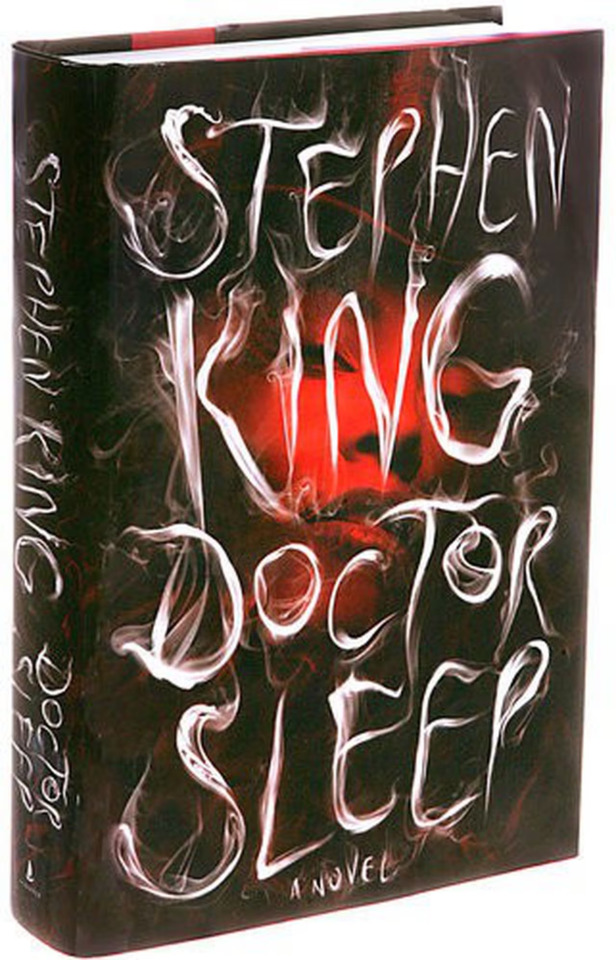
And fascinatingly, a lot of details and ideas of Flanagan's "The Haunting of Hill House" (or its sister-series, "The Haunting of Bly Manor") were reused for his Doctor Sleep movie...

But, speaking of Stephen King, did you know he made his own "The Haunting of Hill House"? Well, almost... He and Steven Spielberg worked on a project in the 1990s: a remake of The Haunting/a new movie adaptation of "The Haunting of Hill House". Unfortunately this movie never came to the light of day, as the two men split apart due to creative differences...

However this did not stop Stephen King from reusing the unused/unfinished script/concept for his "Haunting of Hill House" adaptation, throwing in a lot of elements from his own "The Shining", with several nods to the real-life Winchester Mansion, and tadaa! The result was 2002's mini-series "Rose-Red".

Stephen King has very often praised Jackson's novel. In fact, in his eyes it is one of the two greatest ghost stories of American literature... Alongside Henry James' The Turn of the Screw.

Do you recall Henry James? Sure you do! From the previous post... He wrote the "Ghostly Rental" story, that itself got adapted in 1999 into a horror movie called "The Haunting of Hell House" - confusing Jackson's "Hill House" with Matheson's "Hell House".

Do the links stop here? NOT AT ALL! Flanagan's "The Haunting of Hill House" was supposed to be the first season of an anthology series about ghost stories. This project got cancelled, but not before a sister-series to "The Haunting of Hill House" was made... a second season called "The Haunting of Bly Manor", which is a loose adaptation of "The Turn of the Screw".
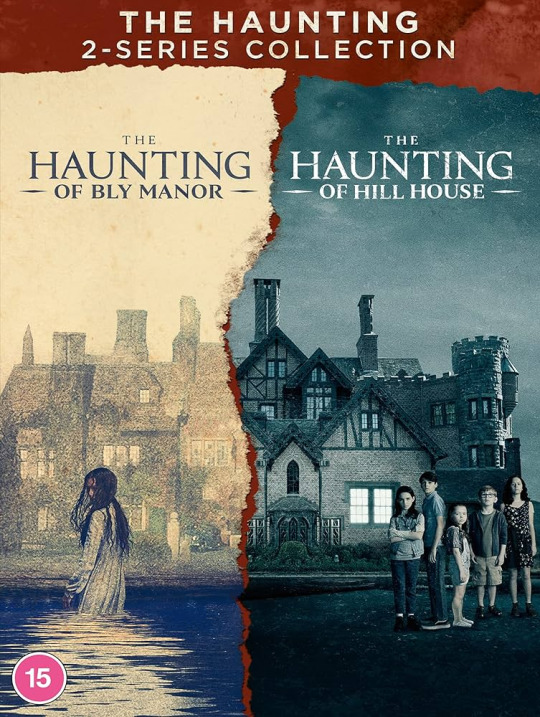
AND THERE'S MORE! Because you see, before being re-adapted by Mike Flanagan, "The Turn of the Screw"'s most famous adaptation was a 1961 movie called "The Innocents". A movie which also became a classic of black-and-white haunted house horror movies, just like "The Haunting" that was released two years afterward... Film critics, cinema theoricians and movie enjoyers all agree that the two movies have to be compared, with something of a sibling relationship to each other.
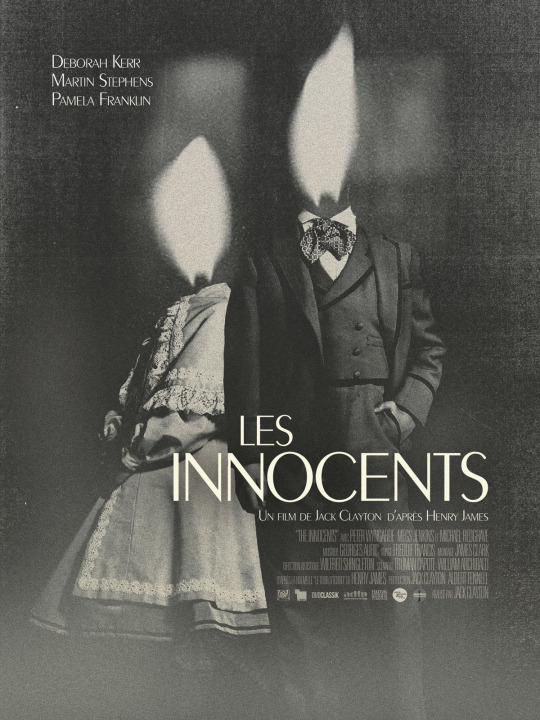
"The Turn of the Screw" - and more specifically the 1961's "The Innocents" movie - also had a huge influence on one of the greatest Spanish moviemakers of the 21st century: Guillermo del Toro. In fact, it was to pay homage to both the classic of Gothic that was "The Innocents", and the behemoth of the traditional horror that was Kubrick's The Shining, that he decided to create his own Gothic horror movie... The wonderfully horrifying "Crimson Peak", released in 2015.
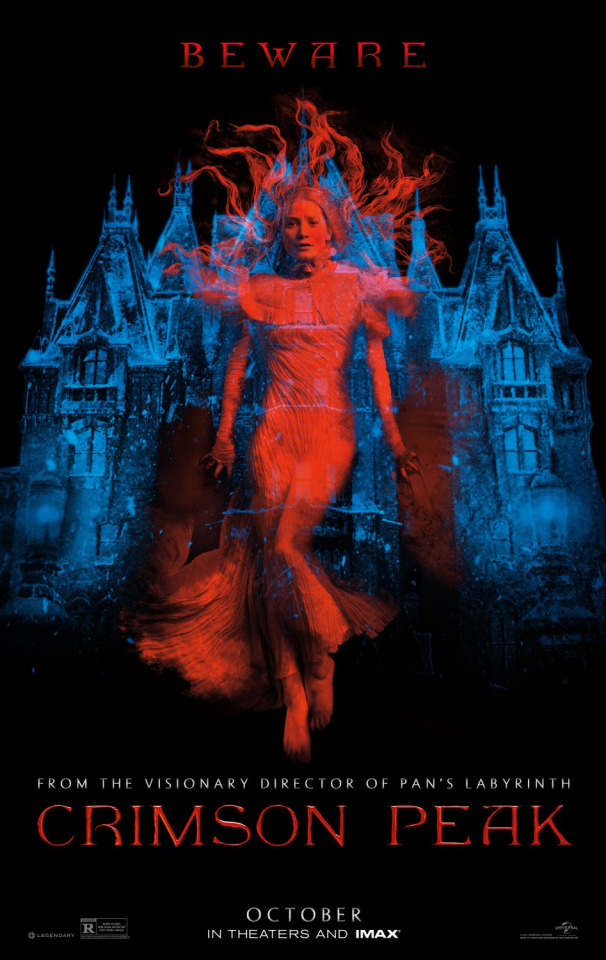
And not only does Crimson Peak unites The Turn of the Screw with The Shining (Guillermo also invoked the influence of other massive horror movies, such as The Omen or The Exorcist) - but this movie also is the final union, the ultimate blooming of Jackson and James' works. Because del Toro's original intention for this movie was to pay homage to the "two grand dames" of the haunted house movies... 1961's The Innocents, and 1963's The Haunting. The two ghostly tragedies finally united in one Gothic movie...
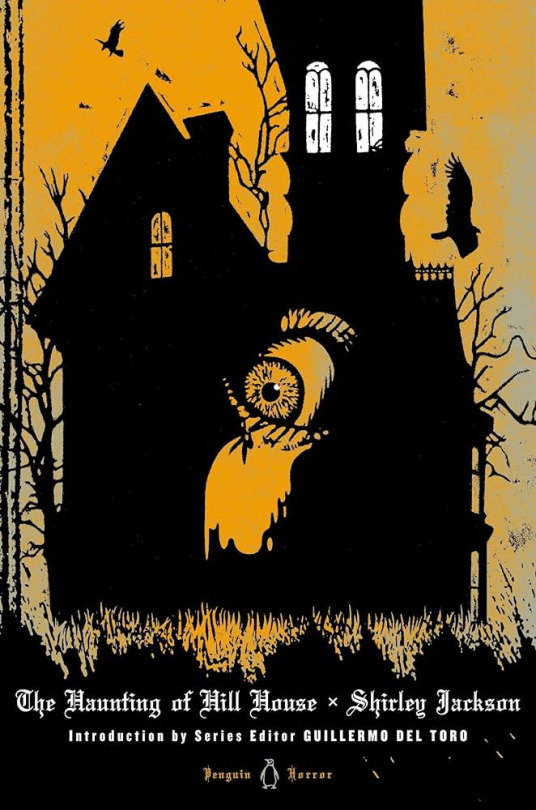
Well... To be fair, the uniting of "The Haunting of Hill House" and of "The Turn of the Screw" had already happened long before del Toro's Crimson Peak, but with a much less famous and successful movie: 1971's Let's Scare Jessica to Death... A cult piece (despite its lukewarm reception), it was created with only one goal in mind: recreating a psychological horror story with ambiguous implications, in the style of James' The Turn of the Screw, and Robert Wise's The Haunting.

(Think we're done? FOOL! Just you wait...)
#the haunting of hill house#mike flanagan#stephen king#shining#the shining#horror movies#rose red#guillermo del toro#crimson peak#let's scare jessica to death#the turn of the screw#the innocents#the haunting of bly manor
84 notes
·
View notes
Text

James Earl Jones
American actor hailed for his many classical roles whose voice became known to millions as that of Darth Vader in Star Wars
During the run of the 2011 revival of Alfred Uhry’s Driving Miss Daisy in London, with Vanessa Redgrave, the actor James Earl Jones, who has died aged 93, was presented with an honorary Oscar by Ben Kingsley, with a link from the Wyndham’s theatre to the awards ceremony in Hollywood.
Glenn Close in Los Angeles said that Jones represented the “essence of truly great acting” and Kingsley spoke of his imposing physical presence, his 1,000-kilowatt smile, his basso profundo voice and his great stillness. Jones’s voice was known to millions as that of Darth Vader in the original Star Wars film trilogy and Mufasa in the 1994 Disney animation The Lion King, as well as being the signature sound of US TV news (“This is CNN”) for many years.
His status as the leading black actor of his generation was established with the Tony award he won in 1969 for his performance as the boxer Jack Jefferson (a fictional version of Jack Johnson) in Howard Sackler’s The Great White Hope on Broadway, a role he repeated in Martin Ritt’s 1970 film, and which earned him an Oscar nomination.
On screen, Jones – as the fictional Douglass Dilman – played the first African-American president, in Joseph Sargent’s 1972 movie The Man, based on an Irving Wallace novel. His stage career was notable for encompassing great roles in the classical repertoire, such as King Lear, Othello, Hickey in Eugene O’Neill’s The Iceman Cometh and Big Daddy in Tennessee Williams’s Cat on a Hot Tin Roof.
He was born in Arkabutla, Mississippi, the son of Robert Earl Jones, a minor actor, boxer, butler and chauffeur, and his wife Ruth (nee Connolly), a teacher, and was proud of claiming African and Irish ancestry. His father left home soon after he was born, and he was raised on a farm in Jackson, Michigan, by his maternal grandparents, John and Maggie Connolly. He spoke with a stutter, a problem he dealt with at Brown’s school in Brethren, Michigan, by reading poetry aloud.
On graduating from the University of Michigan, he served as a US Army Ranger in the Korean war. He began working as an actor and stage manager at the Ramsdell theatre in Manistee, Michigan, where he played his first Othello in 1955, an indication perhaps of his early power and presence.
The family had moved from the deep south to Michigan to find work, and now Jones went to New York to join his father in the theatre and to study at the American Theatre Wing with Lee Strasberg. He made his Broadway debut at the Cort theatre in 1958 in Dory Schary’s Sunrise at Campobello, a play about Franklin D Roosevelt.
He was soon a cornerstone of Joseph Papp’s New York Shakespeare festival in Central Park, playing Caliban in The Tempest, Macduff in Macbeth and another Othello in the 1964 season. He also established a foothold in films, as Lt Lothar Zogg in Stanley Kubrick’s Dr Strangelove (1963), a cold war satire in which Peter Sellers shone with brilliance in three separate roles.
The Great White Hope came to the Alvin theatre in New York from the Arena Stage in Washington, where Jones first unleashed his shattering, shaven-headed performance – he was described as chuckling like thunder, beating his chest and rolling his eyes – in a production by Edwin Sherin that exposed racism in the fight game at the very time of Muhammad Ali’s suspension from the ring on the grounds of his refusal to sign up for military service in the Vietnam war.
Lorraine Hansberry’s Les Blancs (1970) was a response to Jean Genet’s The Blacks, in which Jones, who remained much more of an off-Broadway fixture than a Broadway star in this period, despite his eminence, played a westernised urban African man returning to his village for his father’s funeral. With Papp’s Public theatre, he featured in an all-black version of The Cherry Orchard in 1972, following with John Steinbeck’s Lennie in Of Mice and Men on Broadway and returning to Central Park as a stately King Lear in 1974.
When he played Paul Robeson on Broadway in the 1977-78 season, there was a kerfuffle over alleged misrepresentations in Robeson’s life, but Jones was supported in a letter to the newspapers signed by Edward Albee, Stephen Sondheim, Arthur Miller, Lillian Hellman and Richard Rodgers. He played his final Othello on Broadway in 1982, partnered by Christopher Plummer as Iago, and appeared in the same year in Master Harold and the Boys by Athol Fugard, a white South African playwright he often championed in New York.
In August Wilson’s Fences (1987), part of that writer’s cycle of the century “black experience” plays, he was described as an erupting volcano as a Pittsburgh garbage collector who had lost his dreams of a football career and was too old to play once the major leagues admitted black players. His character, Troy Maxson, is a classic of the modern repertoire, confined in a world of 1950s racism, and has since been played by Denzel Washington and Lenny Henry.
Jones’s film career was solid if not spectacular. Playing Sheikh Abdul, he joined a roll call of British comedy stars – Terry-Thomas, Irene Handl, Roy Kinnear, Spike Milligan and Peter Ustinov – in Marty Feldman’s The Last Remake of Beau Geste (1977), in stark contrast to his (at first uncredited) Malcolm X in Ali’s own biopic, The Greatest (1977), with a screenplay by Ring Lardner. He also appeared in Peter Masterson’s Convicts (1991), a civil war drama; Jon Amiel’s Sommersby (1993), with Richard Gere and Jodie Foster; and Darrell Roodt’s Cry, the Beloved Country (1995), scripted by Ronald Harwood, in which he played a black South African pastor in conflict with his white landowning neighbour in the 40s.
In all these performances, Jones quietly carried his nation’s history on his shoulders. On stage, this sense could irradiate a performance such as that in his partnership with Leslie Uggams in the 2005 Broadway revival at the Cort of Ernest Thompson’s elegiac On Golden Pond; he and Uggams reinvented the film performances of Henry Fonda and Katharine Hepburn as an old couple in a Maine summer house.
He brought his Broadway Big Daddy in Cat on a Hot Tin Roof to London in 2009, playing an electrifying scene with Adrian Lester as his broken sports star son, Brick, at the Novello theatre. The coarse, cancer-ridden big plantation owner was transformed into a rumbling, bear-like figure with a totally unexpected streak of benignity perhaps not entirely suited to the character. But that old voice still rolled through the stalls like a mellow mist, rich as molasses.
That benign streak paid off handsomely, though, in the London reprise of a deeply sentimental Broadway comedy (and Hollywood movie), Driving Miss Daisy, in which his partnership as a chauffeur to Redgrave (unlikely casting as a wealthy southern US Jewish widow, though she got the scantiness down to a tee) was a delightful two-step around the evolving issues of racial tension between 1948 and 1973.
So deep was this bond with Redgrave that he returned to London for a third time in 2013 to play Benedick to her Beatrice in Mark Rylance’s controversial Old Vic production of Much Ado About Nothing, the middle-aged banter of the romantically at-odds couple transformed into wistful, nostalgia for seniors.
His last appearance on Broadway was in a 2015 revival of DL Coburn’s The Gin Game, opposite Cicely Tyson. He was given a lifetime achievement Tony award in 2017, and the Cort theatre was renamed the James Earl Jones theatre in 2022.
Jones’s first marriage, to Julienne Marie (1968-72), ended in divorce. In 1982 he married Cecilia Hart with whom he had a son, Flynn. She died in 2016. He is survived by Flynn, also an actor, and a brother, Matthew.
🔔 James Earl Jones, actor, born 17 January 1931; died 9 September 2024
Daily inspiration. Discover more photos at Just for Books…?
20 notes
·
View notes
Note
do u have any horror recs for other mediums? tv, podcasts, books, youtube shorts, etc
I'm really gonna show my ass in this regard because most of my recommendations are going to be TV shows or short stories because I haven't branched out much beyond that if I'm honest.
I love The Haunting of Hill House (Nell Crain is my favourite horror character full stop) and The Fall of the House of Usher from Mike Flanagan (most of his shows are incredible but these two are my favourite).
THOHH: Flashing between past and present, a fractured family confronts haunting memories of their old home and the terrifying events that drove them from it.
TFOTHOU: To secure their fortune (and future) two ruthless siblings build a family dynasty that begins to crumble when their heirs mysteriously die, one by one.
The Exorcist (2016) was great!
The Exorcist follows two very different priests tackling one family's case of horrifying demonic possession. Father Tomas Ortega is the new face of the Catholic Church: progressive, ambitious and compassionate. He runs a small, but loyal, parish in the suburbs of Chicago. Father Marcus Keane is an orphan raised since childhood by the Vatican to wage war against its enemies. He is everything Father Tomas is not: relentless, abrasive and utterly consumed by his mission.
I really liked American Horror Story: Asylum, can't say the same for the other seasons.
AHS: Asylum takes place in 1964 and follows the stories of the staff and inmates who occupy the fictional mental institution Briarcliff Manor, and intercuts with events in the past and present.
I also liked a few South Korean shows I saw on Netflix.
Kingdom (2019): While strange rumors about their ill King grip a kingdom, the crown prince becomes their only hope against a mysterious plague overtaking the land.
All of Us Are Dead (2022): A high school becomes ground zero for a zombie virus outbreak. Trapped students must fight their way out or turn into one of the rabid infected.
Hellbound (2021): People hear predictions on when they will die. When that time comes, a death angel appears in front of them and kills them.
I loved Interview with a Vampire (especially because it does everything the movie didn't, which is why I didn't like the movie). it's very gay, it plays heavily into the themes of vampirism and sexuality, and I love Sam Reid and Jacob Anderson as Lestat and Louis.
In terms of other media, I really like the Dead Meat channel (if I haven't said it enough already), I also like the Scream Dreams Podcast with Catherine Corcoran (from Terrifier), James A. Janisse (from Dead Meat) and Barbara Crampton (prolific and stunning horror actor).
I know it's a little over done now, but that original series of 'The Backrooms' by KanePixels was great.
Some other horror channels/channels that explore horror as well as other topics are SpookyRice, MistaGG, Wendigoon, ElvisTheAlien, BionicPIG, Trin Lovell, KennieJD, MertKayKay, and AmandaTheJedi.
With books, I'm such a basic bitch, so I've really only read Stephen King's horror books. I'm not sure of this is horror or just very bleak and depressing but I'm Thinking of Ending Things was an incredible reading experience. And at this point it goes without saying House of Leaves is so fucking mindblowing!
H.P. Lovecraft and Edgar Allan Poe were terrible people, but their short stories are truly so dark and well-written, the cosmic horror Lovecraft is known translates best in his writing. Ambrose Bierce is the father of psychological horror as we know it, his short stories are great. My favourite short horror story is The Yellow Wallpaper. If you are interested in an audio version of it, listen to Chelsea from the Dead Meat channel with headphones (headphones are vital to that experience).
That's all I can think of off the top of my head for now! I'm sure others will give their own recommendations.
85 notes
·
View notes
Text

Jesus and the Samaritan Woman
8 (For his disciples were gone away to the city to buy meat.) 9 Then said the woman of Samaria to him, How is it that you, being a Jew, ask drink of me, which am a woman of Samaria? for the Jews have no dealings with the Samaritans. 10 Jesus answered and said to her, If you knew the gift of God, and who it is that said to you, Give me to drink; you would have asked of him, and he would have given you living water. 11 The woman said to him, Sir, you have nothing to draw with, and the well is deep: from where then have you that living water? 12 Are you greater than our father Jacob, which gave us the well, and drank thereof himself, and his children, and his cattle? 13 Jesus answered and said to her, Whoever drinks of this water shall thirst again: 14 But whoever drinks of the water that I shall give him shall never thirst; but the water that I shall give him shall be in him a well of water springing up into everlasting life.
15 The woman said to him, Sir, give me this water, that I thirst not, neither come here to draw. 16 Jesus said to her, Go, call your husband, and come here.
— John 4:8-16 | American King James Version (AKJV)
The American King James Version is Produced by Stone Engelbrite. It is a simple word for modern word update from the King James English.
Cross References: Ezra 4:3; Ezra 4:11; Song of Solomon 4:15; Isaiah 12:3; Isaiah 55:1; Isaiah 58:11; Jeremiah 2:13; John 2:2; John 4:5-6; John 4:20; John 6:34-35; John 7:37
#Jesus#Samaritan woman#well#drink#everlasting life#living water#John 4:8-16#Gospel of John#AKJV#Old Testament#American King James Version#Holy Bible#Stone Engelbrite
17 notes
·
View notes
Text
YA or not YA, that is the question...
This started out as a response to Diane’s post here about YA literature and its long history prior to what some people think inspired it, but got longer (Oh! What a surprise!) and wandered far enough from the initial subject that I decided to post separately.
So here it is.
*****
Many years ago my town library (in Northern Ireland, so following UK library practice, I suppose) had just two sections, Adult and Children. There was no YA section, and the Children’s section covered everything from large-format picture books through to hardback novels and the usual amount of non-fiction.
(Library books were almost always bought in hardback for better wear, and even the softback picture books were rebound with heavy card inserts.)
There were classics like “Treasure Island”, “Kidnapped”, “King Solomon’s Mines” “Under the Red Robe” and “The Jungle Books”.
There were standalone titles like “The Otterbury Incident”, “The Silver Sword”, “The Sword in the Stone” and “The Stone Cage”.
There were series about characters like William, Biggles, Jennings and his counterpart Molesworth, the Moomins, Narnia and Uncle.
There were authors like Alan Garner, Nicholas Stuart Grey, Rosemary Sutcliffe, Henry Treece, Ronald Welch… And of course there was J.R.R. Tolkien.
The first time I got "The Hobbit", "Farmer Giles of Ham" and "Smith of Wootton Major" they were shelved in the Children's section. This was about 1968-69.
In the early 1970s the library moved to larger premises, which allowed room for Very Young Children (where the picture books now lived) and Children (everything else), still with no YA section, though with more advanced picture books like “Tintin” and “Asterix” * in a sort of no-man’s-land between them.
( * These included editions in the original French, which turned out very useful for making language lessons at school a bit more fun and gaining extra marks in exams through judiciously enhanced vocabulary.)
“The Hobbit” et cetera were still on the Children shelves, but now that the library was larger and more open-plan, volumes of "The Lord of The Rings", normally in the Adult section, occasionally got shelved there as well by well-meaning non-staff people.
I never saw “The Hobbit” mis-shelved alongside “Lord of the Rings” among the Adults, but Farmer Giles” and “Smith” sometimes turned up there, courtesy of those same well-meaning hands.
It’s probably because the first, with its sometimes complex wordplay and mock-heroic plot, reads like a humorous parody of more serious works, while the second, if read in the right frame of mind, can seem quite adult in the style of Sylvia Townsend Warner’s “Kingdoms of Elfin” - which is in fact a good deal more adult than “Smith of Wootton Major”, even if you squint.
*****
This “Hobbit” / “Rings” confusion is a lightweight version of assuming a particular author writes every book for the same age-group. This is very much not the case.
Sometimes the thickness of the book is a giveaway. Compare, for instance, @neil-gaiman’s “American Gods” with “Coraline” or indeed “Fortunately, The Milk”.
Sometimes the cover is a hint, for example the difference between “Live and Let Die” by Ian Fleming...

...and “Chitty Chitty Bang Bang”, also by Ian Fleming...

...although the original James Bond novels are – apart from some extremely dated attitudes – a lot more weaksauce than many YA books nowadays.
(More weaksauce still now that Fleming, like Roald Dahl and Agatha Christie, has been censored to conceal the extent to which - let's call them Certain Attitudes - were a standard feature in British popular fiction. Apparently (I haven't read any Newspeak Bond so can't confirm) the redaction was done in a curiously slapdash way, removing some things while leaving others.
These novels have become, IMO anyway, period pieces as much as Kipling, Doyle, Dickens and Austen, and erasure probably has less to do with sensitivity - maybe with some "brush it under the rug and they'll forget about it" involved - than with keeping them marketable, so Fleming doesn't go the way of other once-bestselling writers like "Sapper" and Sydney Horler.)
It would also be a mistake, despite advisory wizards Tom and Carl, to think that @dduane’s “Young Wizards” books are meant for the same age-group as her “Middle Kingdoms” series – although, once again, the later YW books and all of the MK slot into what a modern YA audience expects from its fiction.
But sometimes there’s absolutely no doubt that This Book by This Author is not meant for the readership of That Book by The Same Author. I’m thinking of one example which caused a certain amount of amusement.
“Bee Hunter” by Robert Nye is a retelling of the Beowulf story for children, though IIRC occasional bloody episodes as Grendel takes Hrothgar’s housecarls apart make it more suited to older children.
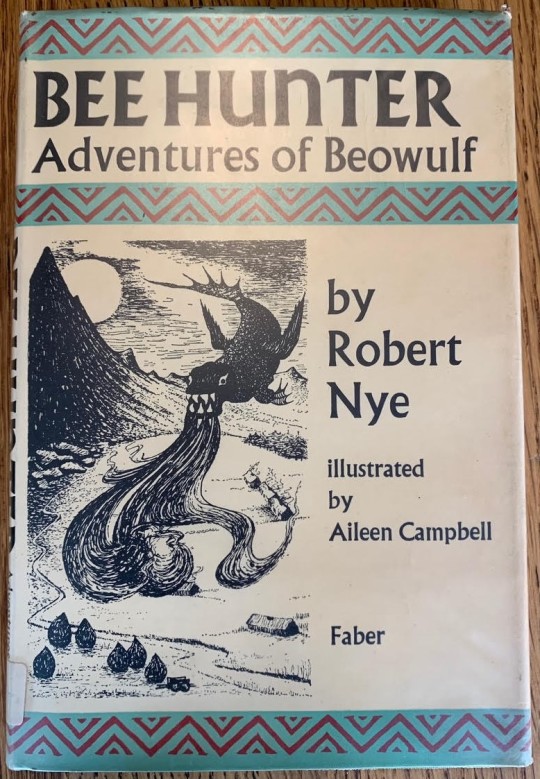
I’d brought home a copy from the library when much younger, and borrowed it again years later in company with another Nye novel, “Falstaff”...
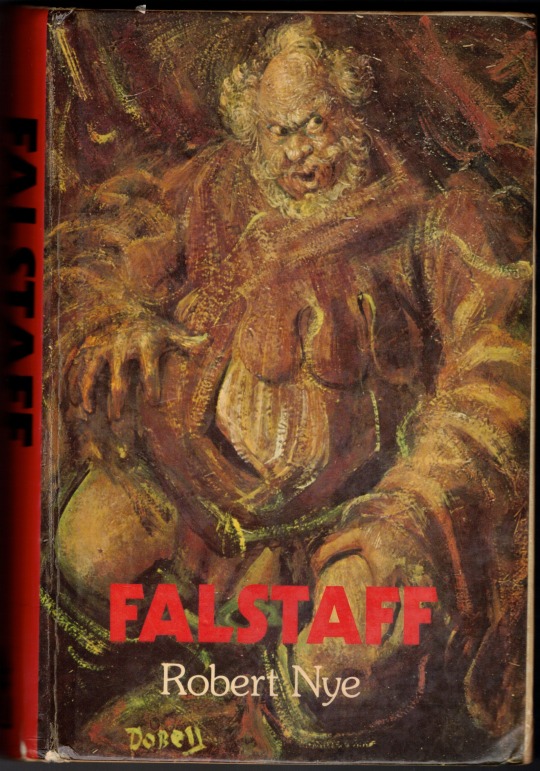
...which was poetic, historic, melancholic, often bawdy, frequently funny and at all times most emphatically NOT for children, as indicated by some of these chapter headings - I draw your attention to XX, XXII, XXXII and especially XL... ;->


Yes. Quite... :->
*****
I was familiar with card index systems from quite early in my life, because my grandfather’s grocer’s shop had a fairly simple one for keeping track of customers, suppliers, stock and so forth, and since the library’s index card system cross-referenced in the same way, I was already home and dry.

If I could remember a title, I'd find the author, and once found I could track down other titles by that author (which, as shown above, can be educational...) Even if I could only remember the subject - historical, adventure, comedy - I'd still have narrowed my search window more than somewhat.
(This from-here-to-there mindset later became virtual train travel by way of the electronic timetables which SBB – Swiss Railways – used to issue on CD, and which let me “travel” anywhere in Europe, complete with a map. Those CDs are long discontinued, but I can still do virtual travel courtesy of the SBB website. Complete with a map…)
This is the last one we got, kept for sentimental reasons and occasional outdated train-travel on an equally outdated XP netbook.

As you do.
Or as I do, anyway. :->
*****
I also knew about title request cards and interlibrary loans, and was a frequent user - never more so than when I started reading “The Lord of the Rings” for the first time.
The town library didn’t have all three volumes, just “The Fellowship of the Ring” and “The Two Towers”, so I checked them out on a Friday to read over the weekend.
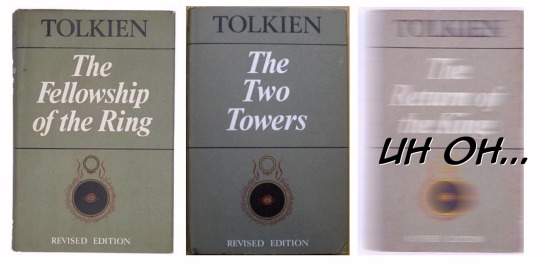
You can already see where this is going… :->
I finished “Fellowship” late on Saturday afternoon, went straight into “Towers” and by Sunday evening was all of a twitter (no, not that one) or as my mum would have said, up to high Doh, as I fretted about Not Knowing What Happened Next.
Fortunately school was no more than a brisk bike ride from the library, so I devoted my Monday morning break to zooming down and filling in one of the most urgent title requests I’ve ever made, then spent the rest of the week on tenterhooks, looking in every lunchtime and each afternoon on my way home.
Just In Case.
Some kindly librarian must have pulled strings or stamped the request "Expedite Soonest", because when I went back to school after Thursday lunch, I had “The Return of the King” burning a hole in my saddlebag.
I wanted to start reading it at once, but good sense prevailed; imagine getting caught between chapters at the back of a boring Geography lesson and Having The Book Confiscated…

I didn’t pay much attention in class on Friday, due to being half-asleep after starting “Return” in the evening after prep and finishing it in the wee hours of the morning.
But being tired didn’t prevent me from starting with “Fellowship” again on Friday night, and this time being able to read right through to the end without needing to stop.
It Was Great…
#YA books#library age categories#library use#don't judge a book by its cover#don't judge an age group by author#anecdotage
83 notes
·
View notes
Note
wait hiiiii hi hello bestie i didn’t know u like video essays!! i’ve been trying to find more to watch recently, do u have any other recs? about any topic 👀
HIIIIII bestie Robin, are you ready?? After harvesting my Youtube subscription and liked video lists here is what I have compiled. I'm gonna put my current top 5 video recommendations and then the rest of the list, under the cut, is organized by creator.
Why Are There So Many Confederate Vampires
The art of religious interpretation (midnight mass vs god’s not dead)
Defunctland: Walt Disney's City of the Future, E.P.C.O.T.
Hogwarts Legacy, JK Rowling, and Trans Advocacy
Cultural Inspirations in Avatar: The Last Airbender Book 1 - Water
CHANNELS
biz barclay - hilarious, brilliant, my best friend who drinks wine and weaves me long insightful stories while sitting on the dresser or in the bathtub. The vast amount of knowledge, historical
understanding snapewives: religion, fandom, sociology, & erotica
Goncharov (1973) video essay
The art of religious interpretation (midnight mass vs god’s not dead)
Xiran Jay Zhao - Author of one of my FAVE YA novels, “Iron Widow” (which is a MUST read). I always want more avatar content that focuses on cultural inspirations from trusted sources. Xiran taught me so much about the avatar universe I already loved as well as valuable critiques. They also do retellings of historical events such as- Bisexual Han Dynasty Emperors and Forgotten Warrior Queen - Fu Hao.
Cultural Inspirations in Avatar: The Last Airbender Book 1 - Water
Cultural Inspirations in Avatar: The Last Airbender Book 2 - Earth
Cultural Inspirations in Avatar: The Last Airbender Book 3 - Fire
Fundie Fridays - Jen, a leftist queer feminist, and her husband James examine different aspects of Christian fundamentalism, American conservative politics and pop culture. She has remade a lot of her older videos so make sure to watch the updated versions! She was also featured in the Amazon docuseries “Shiny Happy People” which I would HIGHLY recommend.
Vacation Bible School of Rock (3 part video series History of Contemporary Christian Music)
Ken Ham’s Creation Museum & Ark Encounter
Ask a Mortician - Caitlin Doughty!!! The adult Wednesday Addams we should have got. So compassionate, informed, and moving!! I love her work and she has taught me so much about what it means to have a relationship with death and grief. Her work deals with heavy topics and you can tell she does this work from a deeply respectful, informed place.
The Lake That Never Gives Up Her Dead
Let’s Visit the Churches Made of Human Skulls
Why are Black and White Funeral Homes STILL Separate? With Dr. Kami Fletcher
Iconic Corpse Series
Princess Weekes - Nuanced video essays on pop culture, race, feminism, and other social issues. Takes time to break down complex concepts, their origins and material consequences. The essay on confederate vampires and the connection later made to sci-fi media like Firefly were so paradigm shifting to me!
Why Are There So Many Confederate Vampires
The Magical Negroes of Stephen King
Ro Ramdin - Poetic, biting, and introspective essays on pop culture.
Do Celebrities Hate Their Fans? (Doja Cat, Frank Ocean)
Hogwarts Legacy, JK Rowling, and Trans Advocacy
DefunctLand- History of extinct theme parks and themed entertainment experiences.
Defunctland: Walt Disney's City of the Future, E.P.C.O.T.
Disney Channel’s Theme: A History Mystery
Mina Le - Fashion, movies and pop culture
WHY IS EVERYTHING SO UGLY: The Curse of Modernism
FAIRYTALE COSTUMES: it’s giving renfaire but why?
Quinton Reviews - Extensive videos covering niche topics, most popular for Nickelodeon deep dive retrospectives.
How Documentaries Lie to You
The ICarly/Victorious Saga Playlist
TheEpicNate315 - yea i fucking love endless hours of useless skyrim lore because the conspiracies are so deep and I have to do 0 of the research to get all of the information years of scouts worked to piece together!
The Skyrim Mysteries Iceberg (Part 1 of 4)
The Fallout Mysteries Iceberg (Part 1 of 2, incomplete series)
Mike’s Mic - Silly, goofy, and thorough breakdowns of nostalgic TV shows
Any of his unhinged recaps - LOST, Pretty Little Liars, Glee
Tiffanyferg - Media criticism and commentary
Internet Analysis Series
Zoë Ligon - sex educator, artist, and writer, who also owns SpectrumBoutique.com, a health and education oriented sex toy store. Such a special place in my heart for her!! Her bondage mini-documentary with Midori was so touching.
Sex Stuff | Japanese Rope Bondage with Midori
Channels Newer to Me
Broey Deschanel - a mixture of film analyses, retrospectives, politics and just absolutely overthinking anything to do with pop culture
Elvis (2022) and the Utter Mediocrity of Biopics
Meeptop - rambling about movies and stuff
Who is Dahmer Even Made For?
LadyJenevia - discussing entertainment media content including films, television series, etc. Expect to find reviews of recent cinematic releases, video essays on older releases, and interviews with talent from the film/television industry
Glass Onion: A Knives Out Mystery and The Art of Hiding in Plain Sight (Netflix Review/Video Essay)
As a disclaimer, I am not endorsing any creator fully and if you see someone you think I should not promote please reach out to me so I can edit this list. As a general rule of thumb the more I had to write about someone, the more informed the recommendation.
#if you read/watch this monster list thank you and I hope you enjoy!!#you can really see my niche interests displayed here lmao#send me asks if you have questions! or have recommendations for me!!#boybff reccomendations#video analysis#video essay reccomendations#video essay#YouTube recommendations
81 notes
·
View notes
Text


James Byrd Jr., a divorced father of three and former salesman, was renowned for his infectious positivity and sociable nature. Whether it was a lively gathering or a mundane day, James infused life into every moment. Often, he could be spotted singing and dancing while tending to his lawn. “He was the funniest person you’d ever want to mee,” recollected Flora Bartee, a neighbour of James’ parents. “Everyone around here knew him. There was no ingrained hatred or anything like that,” recollected his sister, Clara Taylor.
Despite a turbulent past that included a six-year prison stint for theft and parole violation, James was determined to redeem himself upon his release in 1996. Settling into an apartment at the Pineview public housing project in Jasper, Texas, he seemed to be on an upward trajectory. However, an arm injury sustained years prior and a seizure disorder rendered him unable to work, relying solely on disability benefits. To supplement his income, he took up lawn-mowing gigs around town.
On the 7th of June, he attended his niece’s bridal shower at his parents’ home in Jasper. Before leaving, he gave his older sister, Stella Brumley, a big hug and she reminded him to get ready for Father’s Day. It was family tradition that all eight of the siblings would gather for the Sunday service at their parents’ church. “I got my suit in the cleaners. I’m going to be ready,” he reassured his sister and headed down the driveway, ready to walk home.
As he walked down the dirt road, three men pulled up alongside him in their truck. They were: 31-year-old Lawrence Russel Brewer of Sulphur Springs, 23-year-old Shawn Allen Berry of Jasper and 23-year-old John William King, also of Jasper. All three men had served time in prison and had ties to the Ku Klux Klan or the Aryan Brotherhood.
The Aryan Brotherhood got its start on the West Coast in the 1960s. It boasts of members throughout prisons in the United States and exhibits an intense hatred of African Americans and Jews. They considered prison ripe recruiting grounds for the organization. The Aryan Brotherhood has ties to the Aryan Nation, an Idaho-based paramilitary organization that advocates racial violence and white supremacy.
James jumped into the truck bed and the men first of all drove to a convenience store east of Jasper. There are a number of different versions of events as to what happened next in regards to who was driving the vehicle and who decided James’ fate. What is known, however, is that the men drove James up to a small clearing in the woods on Huff Creek Road. Here, James was dragged from the truck and severely beaten, urinated on and defecated on.
During the beating, John reportedly said: “We’re starting The turner Diaries early.” The Turner Diaries was written in 1978 by William Pierce, the head of the National Alliance, one of the largest and most organized neo-Nazi groups within the United States. It is kind of like a bible for right-wing extremists and calls for the violent overthrow of the Federal government as well as the systematic killing of Jews and people of colour.
Following the brutal beating, James was spray painted on the face and then chained by his ankles to the pickup truck, a symbolic remnant of slavery. The men then drove the truck, dragging James behind it. The three men didn’t stop driving as James’s flesh ripped from his body as they weaved from one side of the road to the other side.
They didn’t stop after they came around a sharp turn and James’s body bounced into a ditch at the side of the road, hitting the ragged end of a concrete culvert just below his arm. They didn’t stop when the impact ripped James’s arm, shoulder, neck and head from the rest of his body. They continued to drive for a further mile with just half of James’s body. They finally stopped the truck after three miles, when they ran out of paved road.
After investigators arrived at the church where James’s mutilated body was found, they set up the task of identifying him and retrieving the rest of his body. It wouldn’t be long until his other remains were discovered. His head, neck, and right arm were recovered along the road leading up to the church. There were smears of blood running along the road as well as James’ dentures and pieces of flesh that had ripped from his body here and there. Along the bloody trail, investigators found James’ tennis shoes, shirt, wallet and keys.
The trail of James’ life coming to a cruel end was clear. His blood was smeared along more than two miles of country road.
The three killers were quickly identified and apprehended. They all stood separately and were convicted. Brewer was executed in 2011, following by King in 2019. Berry was sentenced to life in prison and will be eligible for parole in 2038.
20 notes
·
View notes
Text
"In 1946, the term 'homosexuals' appeared for the first time in an English Bible. This new figure appeared in a list of sinners barred--according to a verse in the Apostles Paul's first epistle to the Corinthians--from inheriting the kingdom of God. The word change was made by leading Bible scholars, members of the translation committee that labored for over a decade to produce the Revised Standard Version (RSV) of the Bible. With an approach inspired by text-critical scholarship, many of their choices upset readers of the older King James Version, the favored Bible of Protestant America since the colonial era. Amid the outrage over other changes--to the red-letter words of Jesus and the old Shakespearean idiom--another modernizing innovation went virtual unremarked. Two enigmatic Greek nouns, referenced in the King James as 'effeminate' and 'abusers of themselves with mankind,' now appeared as a single, streamlined 'homosexual.' Subsequent Bible commentaries approached the new term as age-old tradition...
Some Bible readers, however, responded with surprise to this textual change. In everyday use, the verse in I Corinthians had other meanings. The author of a 1956 advice book on how to write sermons recounted the embarrassing tale of one minister's well-loved sermon. That sermon, delivered on various occasions, expanded on the 'general meaning' of the Apostle Paul's reference to the 'effeminate,' which the pastor took as warning against 'the soft, the pliable, those who take the easy road.' The take-away point was that Christians must undertake the difficult path of faith. It was a fine sermon, or so the pastor thought, until he read the RSV. He discovered 'to his amazement and chagrin; that 'effeminate' was translated 'homosexuals.' The confusion was a lesson, the author of this advice book chided, on the need to use recent translations. A check through earlier Bible commentaries confirms that outdated reference tools may indeed have contributed to this pastor's error. An eariler edition of The Interpreter's Bible, published in 1929, said nothing at all about homosexuality in its commentary on the same verse in I Corinthians. It noted that the Apostle Paul was keenly aware of the 'idolatry and immorality' of the pagan world. However, the named vice that so perturbed the apostle was 'self indulgence of appetite and speech,' an interpretation that more readily fit with the pastor's call to a disciplined faith. If Christianity did indeed set itself against homosexuality from the first, then this popular Christian reference text neglected to make that prohibition clear.
Several scholars of American religion have puzzled over the peculiar silences of early twentieth-century Christian texts on the topic of same-sex sexuality. After surveying the published Christian literature of that time, Randall Balmer and Lauren Winner concluded that during those decades, 'the safest thing to say about homosexuality was nothing.' They note that even the published commentary on 'sodomy,' which would seem to be the clearest antecedent to later talk about homosexuality, yielded little that would illumine a long tradition of same-sex regulation. Although many Bible reference tools mentioned that damnable 'sin of Sodom,' the muddled and circular commentary on this 'loathsome vice' offered little that clarified its nature. Historian Rebecca Davis, on her own hunt to find Christian teachings about homosexuality, similarly notes the profound absence in early and mid-twentieth century Protestant literature--and especially in the writing by conservative fundamentalists. 'The extant printed record,' she observes, 'suggests that they avoided discussions of homosexuality almost entirely.' Adding further substance to this void are the findings from Alfred Kinsey's study of the sexual behavior of white American men, conducted between 1936 and 1946. The study suggested that Christians, although well acquainted with the sinfulness of masturbation and premarital intercourse, knew very little about what their churches had to say about same-sex acts. 'There has not been so frequent or so free discussion of the sinfulness of the homosexual in religious literature,' Kinsey wrote. 'Consequently, it is not unusual to find even devoutly religious persons who become involved in the homosexual without any clear understanding of the church's attitude on the subject.' Before the 1940s, the Bible's seemingly plain condemnation of homosexuality was not plain at all.
...
What this book [Reforming Sodom] shows is that the broad common sense about the Bible's specifically same-sex meaning was an invention of the twentieth century. Today's antihomosexual animus, that is, is not the singular residue of an ancient damnation. Rather, it is the product of a more complex modern synthesis. To find the influential generators of that synthesis, moreover, we should look not to fundamentalist preachers but to their counterparts. Religious liberals, urbane modernizers of the twentieth century, studiously un-muddled the confused category of 'sodomitical sin' and assigned to it a singular same-sex meaning. The ideas informing this shift germinated out of the therapeutic sciences of psychiatry and psychology, an emerging field of the late nineteenth century that promised scientific frameworks for measuring and studying human sexual behavior. Liberal Protestants were early adopters of these scientific insights, which percolated through various early twentieth-century projects of moral reform. Among the yield from the convivial pairing of medicine and morality was the midcentury translation of the RSV. The newly focused homosexual prohibitions evidenced the grafting of new therapeutic terms onto ancient roots. The scores of subsequent Bible translations produced in later decades adopted and sharpened the RSV's durable precedent. In the shelves of late twentieth-century translations and commentaries--none more influential than the 1978 New International Version, which quickly displaced the King James as America's best-selling Bible--American Christians read what might be called a 'homosexualized' Bible. Instead of the archaic sinners and enigmatic sodomy talk found in the King James, these modern Bibles spoke clearly and plainly about the tradition's prohibition against same-sex behavior. The subsequent debate about the implications of these self-evident meanings overlooked a nearly invisible truth: the Bible's plain speech about homosexuality issued from a newly implanted therapeutic tongue."
Heather R. White, Reforming Sodom: Protestants and the Rise of Gay Rights
22 notes
·
View notes